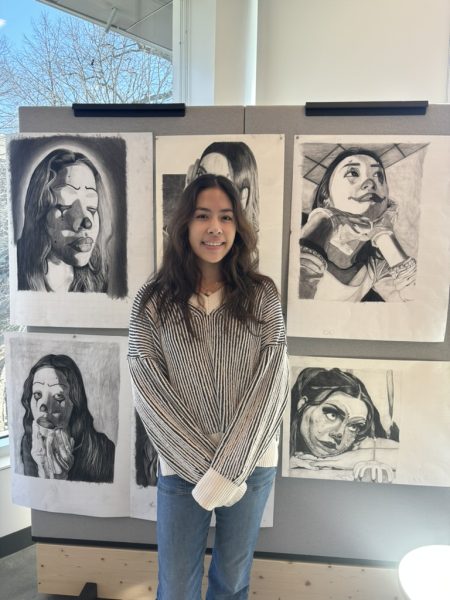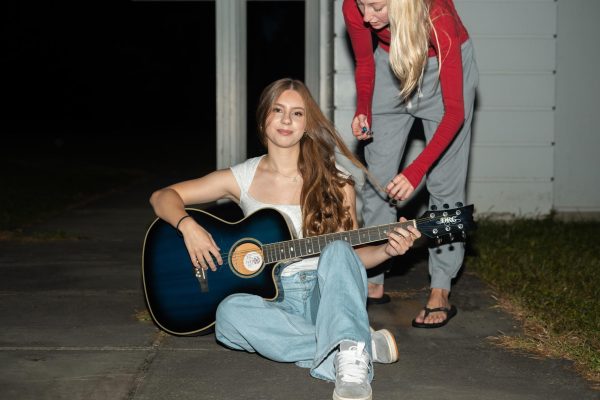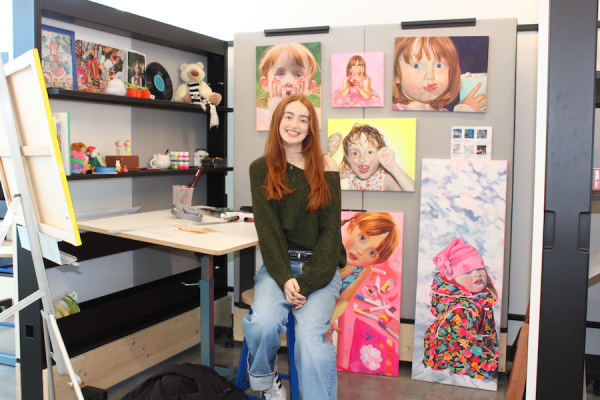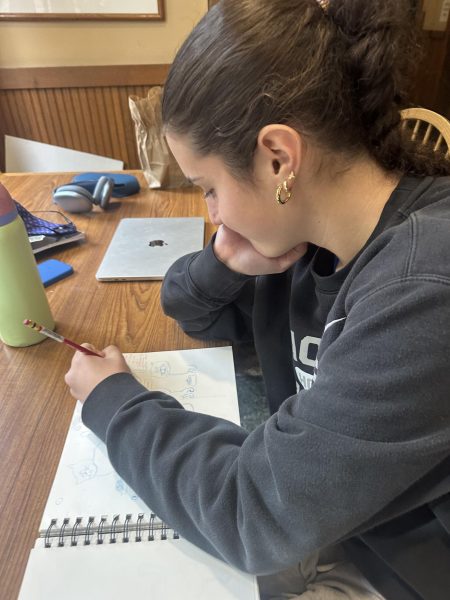COVID Brings Change to Visual Arts
Art is a definitive form of communication. It transcends social, political, and geographical boundaries due to its innate and primal nature, and has been forced to transform to accommodate the “new normal” of COVID-19, which presented the art world with numerous obstacles.
Art affects almost every facet of our lives, and its evolution during the pandemic has reverberated throughout our society. Teachers and professional artists alike have commented on their experiences.
Specifically, the way art is taught has drastically changed. Museums and galleries have closed their doors to artists and visiting schools, prohibiting field trips and exhibitions. This set back teachers and artists, but allowed them to derive their influence from other sources.
Art materials are also in short supply, forcing artists to look for alternative materials and mediums such as photography, graffiti, and other resources readily available.
The pandemic has demonstrated in a clear and direct way the influence society has on the art we produce. Due to the pandemic’s rapid growth in technological innovation, many different, new modes of expression have become available to artists during the pandemic.
Some artists say their work has not been affected by the COVID-19 pandemic. Brent Bongiorno, an art teacher at Saint Ann’s School in Brooklyn said, “It depends on your own personal approach to art. For me, my work was not affected.” He had to make classes more lecture centric which was “atypical,” but allowed him to “talk about individual work.” However, there was a downside. Mr. Bongiorno noted how it was occasionally challenging in class as he sensed that “some kids were unhappy with the situation and did not like being online.”
Mr. Bongiorno commented on the lack of equity students experienced during quarantine as they did not all have the same supplies to work with but, quickly, they were presented with new applications to use and myriad platforms to conduct a class on demonstrating aand meeting of the needs people have. Unfortunately, not everyone’s needs can be met in the world of art.
From the perspective of Hackley art teacher Mark Green, teaching during quarantine was apparently “not as fluid as it used to be in-person.” For him, adjusting to this foreign mode of “transferring knowledge” provided some beneficial aspects to the teaching environment, but proved to be rather inhibiting.
“Masks, social distancing, and plastic table barriers are physical, inconvenient barriers to teaching, but information can be taught with greater speed than a totally remote situation,” he said.
But Mr. Green also noted a silver-lining for pandemic-era teaching: “In remote, teaching requires breaking content up into small chunks that can be easily explained individually while relating them to a larger whole. It’s more time consuming but the most effective means of transferring knowledge.”
Artist Laura Barnett, a colleague to Mr. Bongiorno at Saint Ann’s, offered some insight into how the theatre department has transformed during this unprecedented time.
For Ms. Barnett, teaching theatre, which requires an interaction between performers and audience, was a challenge: “The techniques necessary, including physical and vocal projection, are antithetical to the Zoom Room.” Naturally, she has had to overcome these challenges, “had to become even more creative and flexible than before.”






